Introduction to Stella controls
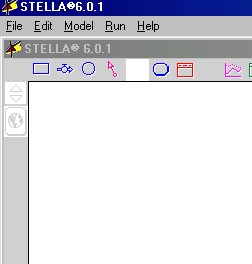
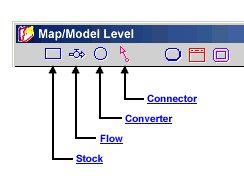
The Stella graphical drawing area
Graphical view
In this simple diagram you can see some of
the basic elements of a Stella model:
A stock is a pool of stuff
A flow is what makes the stock bigger
or smaller
A converter is some factor that controls the flow.
A connector is an arrow indicating that one element
controls another.
The little blob on the left side of the input flow is a source or
sink outside the model.
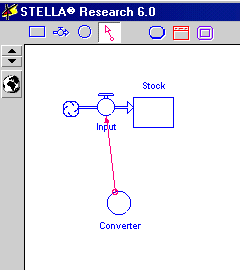
| |
Sometimes these flows represent an actual transfer of stuff from one place to
another. Other times this is just an abstraction which represents some growth or
decay process.
Equation View
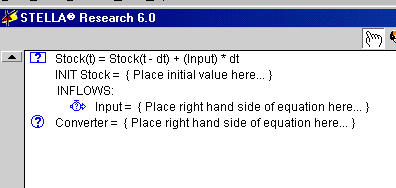
| By clicking the arrows at the top left you can switch from graphical
view into equation view. If you double-click on any line of the equation
you get a dialog box to edit the equation.
This model is very unformed and does not have any equations defined, except
the relation between the stock and the input flow.
In general, you use the graph view to draw out general relations among the
elements. Then you switch to equation view to fill in the details. There is also
an interface view where you can put explanations, snazzy visuals, etc.
|
A simple flow model
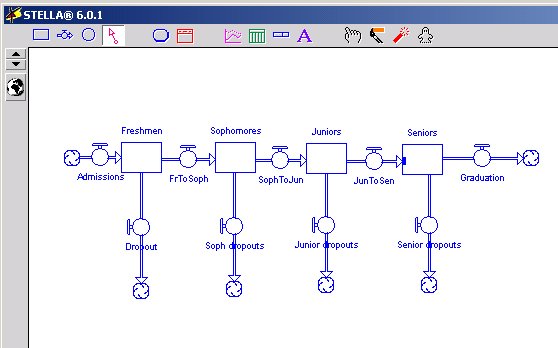 | Here are the basic stocks and flows for a model
of a college. We have simplified the model by not including transfer students.
|
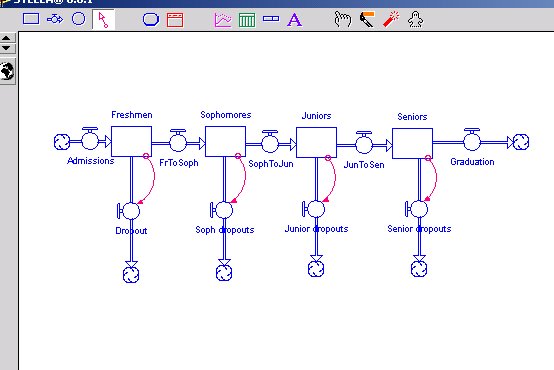 | Let's suppose we are assuming that 20% of each class
will drop out. This means that the dropout flow depends on the stock of students
in each class. So, we need the connectors shown here.
|
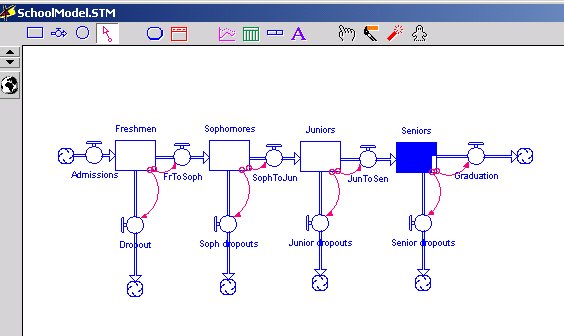 | If we assume the other 80% of each class moves on to the
next class, then that flow also depends on the stock of students.
|
The batted-ball model in Stella
|
In the batted ball model, velocity does not flow into position, but velocity does
influence the change of position. So we model it like this.
| 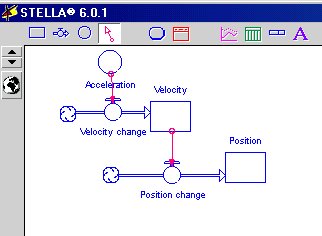
|
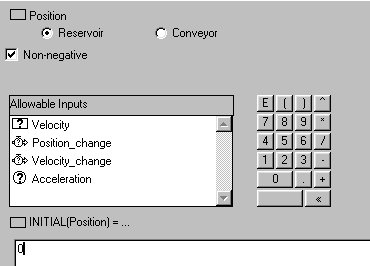
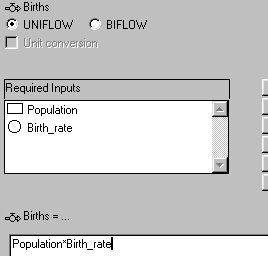
Two simple population models
The exponential growth model
In the simplest population model, growth is a constant percentage of the population
size.
The model has five elements:
The population size (a stock)
Births and deaths (flows into and out of popluation size)
The population birth rate (a converter, controlling births)
The population death rate (a converter, controlling deaths)
| 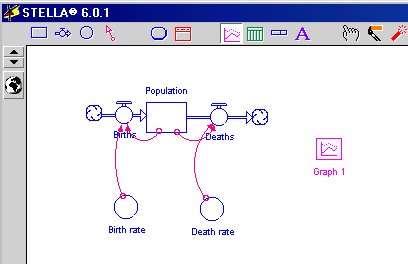
|
The logistic growth model
A standard population dynamics model is the logistic growth model. This model
includes a carrying capacity, which is the largest population size the environment
can support. The behavior of the logistic model is like this:
For small population sizes, the population grows exponentially;
As the population approaches carrying capacity, growth rate goes
down and the population levels off.
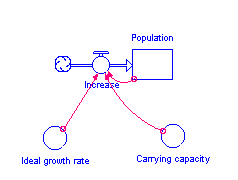
| The growth of the population in this model is controlled by
the ideal growth rate , plus the carrying capacity.
Now, the growth rate depends on the population size relative to
the carrying capacity.
|
An equation sometimes used is
Actual population size
Actual growth rate = Ideal growth rate * (1 - ------------------------- )
Carrying capacity
This is a simple function which has the following nice properties:
For small population sizes, the growth rate is nearly the ideal growth rate
For larger population sizes, the growth rate is nearly zero.
In class we will work out these two examples on Stella. Pay special attention to
how we create a graph pad object to graph the model results.











